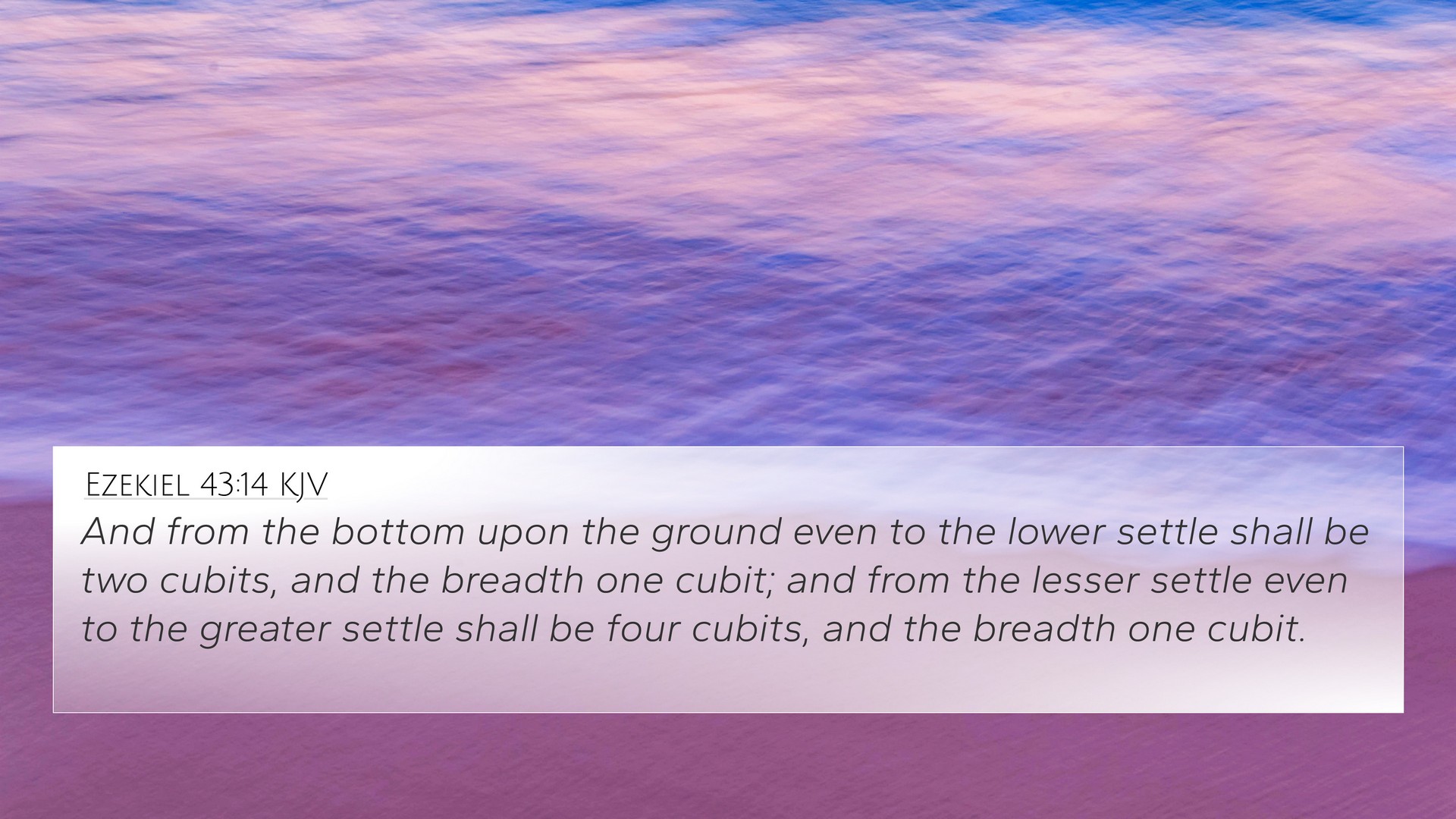Ezekiel 43:14 - Summary and Interpretations
Ezekiel 43:14 presents a significant theological point regarding the dimensions of the altar in the future temple. This verse reads:
“And from the bottom of the altar upward, it shall be four cubits: and from the altar and upward shall be four horns.”
Overview of Ezekiel 43:14
This verse occurs within a prophetic vision Ezekiel received concerning the restoration of Israel and the new temple. It details the dimensions and significance of the altar, indicating that it is to be carefully measured and structured.
Interpretations and Insights
-
Matthew Henry:
Henry suggests that this detailed measurement of the altar signifies the importance of God’s presence among His people. The altar symbolizes not only a place of sacrifice but also God's covenant with His people. The specific mention of the four cubits indicates completeness and perfection related to divine service.
-
Albert Barnes:
Barnes highlights that the horns of the altar further emphasize the idea of strength and refuge. The altar, designed in this manner, serves as a potent reminder of the sacrificial system and the need for atonement through sacrifice, which ultimately culminates in Christ's ultimate sacrifice.
-
Adam Clarke:
Clarke elaborates on the symbolism of the four horns and their significance in the context of ancient rituals. He interprets the altar as not just a physical structure but emblematic of God’s mercy and the intercession for the people. The structured dimensions indicate God's order and design in worship.
Connections between Bible Verses
Understanding Ezekiel 43:14 also involves seeing its connections to other Bible verses and themes:
Cross-References
- Exodus 27:1-2: Details concerning the construction of the altar.
- Leviticus 4:7: The significance of the horns on the altar in relation to sin offerings.
- Psalms 118:27: The Lord is God, and He has given us light; bind the sacrifice with cords to the horns of the altar.
- Isaiah 56:7: My house shall be called a house of prayer for all nations, connecting to the temple's purpose.
- Hebrews 13:10: We have an altar, which those who serve the tabernacle have no right to eat.
- Romans 12:1: Present your bodies as living sacrifices, relating the symbolic nature of the altar.
- Revelation 14:18: The altar in heaven and its role in divine judgment.
- Matthew 5:23-24: The importance of the altar in our relationship with others and God.
- 2 Chronicles 3:1: Solomon's construction of the temple, echoing themes of divine presence.
- 1 Peter 2:5: Believers are described as living stones being built up into a spiritual house.
Thematic Bible Verse Connections
Through cross-referencing Biblical texts, we observe thematic connections that resonate throughout the scriptures:
- The symbolism of the altar in the context of worship and sacrifice.
- The dimensions and structure of sacred spaces and their representation of God's holiness.
- Inter-Biblical dialogue regarding the prophecy of restoration and the promise of Christ.
- Understanding the continuity of God's covenant throughout the narrative of the Bible.
- The altar as a motif reflecting the need for atonement and reconciliation with God.
Conclusion
Ezekiel 43:14 is far more than a mere architectural description; it serves as a profound symbol of God's relationship with His people and the sacrificial system that undergirds that relationship. It invites the reader to explore deeper connections within the scripture through the use of proper Bible cross-reference tools and resources.
Tools for Bible Cross-Referencing
To delve deeper into the connections in scripture, consider utilizing:
- Bible concordance: For finding specific words and their occurrences.
- Bible cross-reference guide: For identifying thematic and contextual links.
- Comprehensive Bible cross-reference materials: For detailed studies and deeper understanding.
Additional Study Methods
Understanding how to use Bible cross-references effectively can enhance one’s study:
- Utilizing digital Bible study tools to quickly find related verses and themes.
- Employing a cross-reference Bible study method to draw parallels between texts.
- Conducting comparative Bible verse analysis for In-depth understanding of doctrines.


